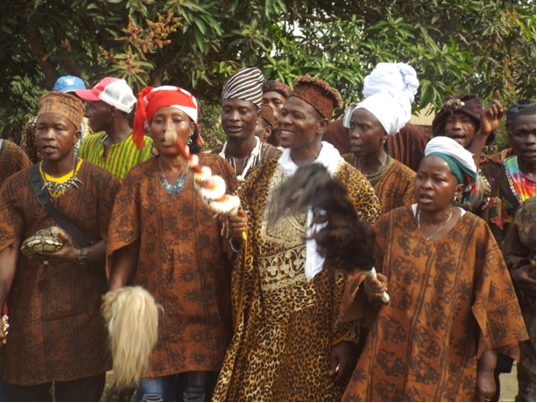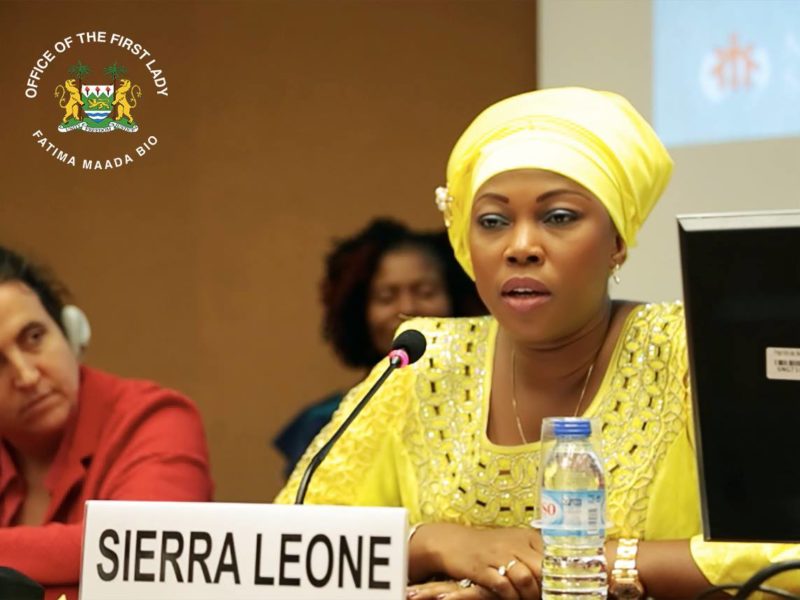Reversing female circumcision in Africa
Tonte Ikoluba was 13 years old when her grandmother came to her family home to circumcise her. It was important she go through the rite, her grandmother said, in order to become a respectable woman and increase her chances of getting married some day.
“I closed my eyes tight and tried to gather my courage,” she said. She wanted to wait a little bit, but her grandmother and another woman held her down.
Innovative surgery gives women normal lives
Female circumcision — otherwise known as female genital mutilation or cutting (FGM/C) — is defined by the World Health Organization as “all procedures that involve partial or total removal of the external female genitalia. It also involves any other injury to the female genital organs for non-medical reasons.”
FGM/C is a millennia-long custom that practicing communities believe is an essential part of raising a girl properly. About 140 million girls and women worldwide are currently living with the consequences of FGM/C, according to the World Health Organization. Some 92 million girls 10 years old and above who have undergone the practice are in Africa, the agency adds.
Health consequences
The practice has several immediate and long-term health consequences, says Marci Bowers, a gynaecologist in San Mateo, California. Many women like Tonte suffer for years after being circumcised because of scarring and frequent infections. The pain is constant, says Tonte. She is 35 years old and is still single, she says, because she cannot bear to have anyone touch her “down there.” Not even a doctor.
Dr. Bowers told Africa Renewal that pain is a major problem for her patients. The majority have undergone the most severe kind of cutting, called infibulation, in which the clitoris is removed and the labia are stitched together to form a cover over the vagina. Only a small hole is left for urine, menstrual blood, childbirth and intercourse.
Dr. Bowers is a surgeon who performs “reversal surgery” on her patients to repair the vagina and clitoris so that these women can have more normal lives. “The scar tissue that forms around the clitoris and encases it is uncomfortable. But in the cases where women have been infibulated, by dividing that infibulation, for the first time since the incision they are able to pass urine normally, they are able to pass menses normally. And they are able to have sex or childbirth without a constricting band that prevents those things.”
She says the surgery is 100 per cent effective in alleviating pain for patients. “The relief that overwhelms these women has been one of the reasons women are glad they went through this surgery.”
Advances in surgery
Reconstructive surgery for patients who have gone through FGM/C has been around for a long time. But the technique of clitoral repair surgery was only developed in 2004 by a French urologist, Dr. Pierre Foldès. It entails opening the scar tissue, exposing the nerves buried underneath and grafting on fresh tissue. The procedure reduces the chronic pain associated with FGM/C, allows women to regain clitoral sensitivity and even permits some to attain orgasm.
In Burkina Faso, where Dr. Foldès has trained several surgeons, the procedure has been offered since 2006. Previously, in 2001, the government sponsored and introduced a more general genital repair surgery, reports the National Commission Against Excision. Meanwhile, in an effort to make the clitoral repair surgery readily available in Africa, seven surgeons in Dakar, Senegal, recently received certification after training under Dr. Foldès and Senegalese oncologist Dr. Abdoul Aziz Kassé.
Dr. Bowers was also Dr. Foldès’ pupil and has now volunteered to do similar work. Together with the Campaign Against Female Genital Mutilation (CAGeM), an international network devoted to countering FGM, she will help make the surgery available in Africa too. The organization was established in 1998 by a group of women doctors in Africa, in response to the high rate of infant and maternal deaths in communities that practice FGM/C.
CAGeM is building a hospital in Port Harcourt, in southern Nigeria. To be called Restoration Hospital, it will provide the surgery for free and be open to any patient from West Africa. Dr. Aberie Ikinko, director of the organization’s US branch, explains: “We have already 400 women on the waiting list. We are also training the local doctors so that when we leave, they can continue to perform the surgeries for free.”
Campaign for change
A high-level event at the UN General Assembly in September 2012 called for increased commitment and concerted action from governments to ban the practice of FGM/C. A UN resolution, championed by Chantal Compaoré, the first lady of Burkina Faso, is in the works.
After two decades of global efforts to end this practice, many communities are also now embracing change. Close to two thousand communities across Africa abandoned the practice in 2011 alone, according to a report by the Joint Programme for the Acceleration of the Abandonment of FGM/C. Set up in 2008 by the UN Children’s Fund and the UN Population Fund, the programme seeks to spur change and stop the practice through a culturally sensitive, human rights–based approach.
Some previous strategies that regarded the rite as “barbaric” and “backward” met with resentment and backlash from local communities. Rather than ending FGM/C, such campaigns pushed supporters to simply hide the practice and scared them from seeking medical care, thereby placing young girls’ lives at continued risk. Recently, educational efforts have been playing a more central role in ending the practice, with many activists choosing to present FGM/C as a public health issue.
Although there is renewed hope for a global ban on the practice, so far there has been little focus on solutions for the many girls and women who have already undergone cutting. The possibility of reconstructive surgery is therefore a godsend to young women like Tonte. “They took away part of my womanhood,” she says. “I just feel very deprived. I want to be whole again.”
By Jocelyne Sambira, Africa Renewal
Stay with Sierra Express Media, for your trusted place in news!
© 2012, https:. All rights reserved.






MICHAEL ROLOFF
/
Making it a taboo to compare male with female sexual mutilation is the biggest scandal of the controversy. In both instances the most sensitive and most erogenous zone of the human body is amputated and severely damaged. In both instances, what counts primarily is the cutting of human sexuality. The imposition of control by the patriarchy.
What is lacking in all the talk about circumcision is discussion of its
archeological dimension – that it is the left over of human sacrifice.
Also, unfortunately it is / has been circumcision that has MADE for no end of anti-semitic sentiments. Freud found that it was the chief reason for unconscious anti-Semitism. And the myths surrounding it are at the core of the “blood libel.” Thus, it’s time to eliminate the Brit Milah because if that is the chief reason for being anti-Semitic or anti-Abrahamic [Islam too practices the rite] then why hang on to this left-over of human sacrifice? that traumatizesthe child, cutting off 5,000 nerves, that is the equivalent of female circumcision in the sense that it eliminates everything but the clitoris,and only serves the UltraOrthodox to maintain their power? After all, reform Judaism sought to eliminate the rite in the 19th century, and Jewish identity depends on being born by a Jewish mother, or converting. Here a link to an archive of the entire German and then some debate, note especially Michael Wolffsohn’s two pieces . Circumcision has been controversial also within Jewry forever.
http://analytic-comments.blogspot.com/2012/08/the-circumcision-debate-links-and.html
http://analytic-comments.blogspot.com/2012/10/michael-wolffsohns-foreskin-of-heart.html
http://www.facebook.com/mike.roloff1?ref=name
=======================
—
—
25th November 2012